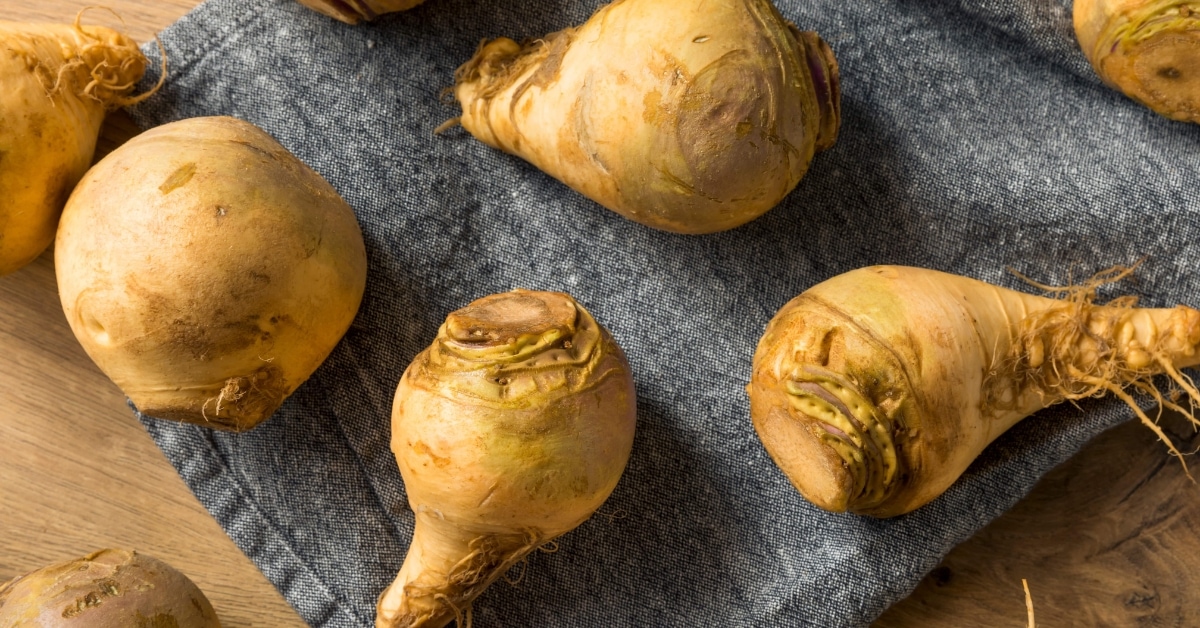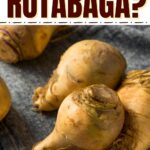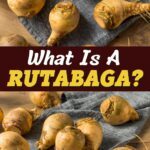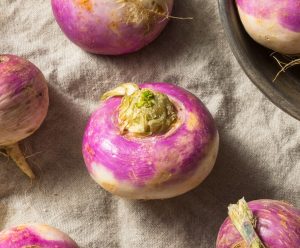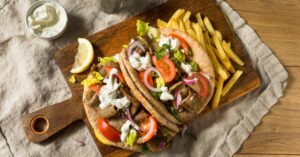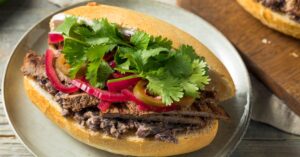What is a rutabaga?
No matter your experience level in the kitchen, that’s a question you might still need someone to answer!
After all, I heard my grandmother talk about cooking rutabaga my whole life.
I still didn’t really know what it was until a couple of years ago.

I had eaten it, of course, but that didn’t mean I knew what it was.
It was just something my grandmother cooked and spooned onto my plate.
So don’t be ashamed if you don’t know what a rutabaga is.
But stick around because I’m about to tell you all about it!
What Is a Rutabaga?
Rutabagas are a type of root vegetable that originated in the 17th century.
They look like oversized turnips, and for good reason. They’re a cross between turnips and wild cabbages.
That puts them in the same family as both, the family Brassicaceae. Some people call them Swedish turnips or purple turnips.
Besides cabbage and turnips, they’re also related to cauliflower, broccoli, kale, etc.
They’re large, often purple and yellowish-brown, and have a sweet, earthy flavor.
Some people compare them to sweet potatoes.
Others say they’re more like milder turnips. Either way, they’re flavorful and remarkably healthy.
People often substitute them for turnips, potatoes, and other starchy root veggies. You can eat them cooked or raw.
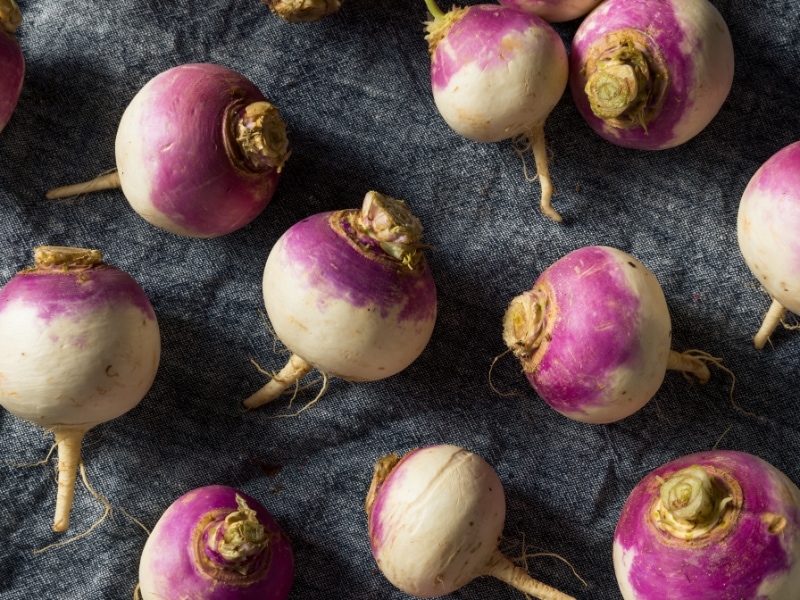
Rutabaga vs. Turnip
So, how do you differentiate between turnips and rutabagas?
They’re both similarly shaped, and some even have similar color schemes.
Fortunately, they’re easily identifiable when you put them side by side.
For one thing, rutabagas are almost always larger than their turnip cousins.
They’re also more purple in their colored parts. Turnips, on the other hand, have a reddish-purple hue.
The creamy parts of both veggies are also different.
Turnips look white, while rutabagas look yellowish, sometimes even brownish. Both are creamy white inside.
They also need different climates in which to grow.
Rutabagas can only thrive in cooler areas, but turnips can grow pretty much anywhere.
As for taste, rutabagas are slightly sweeter and have less bite than turnips. Both still retain a hint of bitterness, though.
There’s not much difference when it comes to preparing and cooking with them.
You can easily swap one for the other in most recipes.
Rutabaga Nutrition Profile
Like most veggies, rutabaga is low in calories and pretty healthy.
Let’s look at the nutritional breakdown for one medium-sized rutabaga:
- Calories: 143
- Fat: 0.5 g
- Protein: 4 g
- Carbs: 33 g
- Fiber: 9 g
- Carbs: 33 grams
They also contain over 100% of your daily vitamin C recommendation.
And they’re packed with antioxidants, particularly the cancer-fighting carotene.
They’re a decent source of potassium and calcium, as well.
Furthermore, evidence suggests that regular rutabaga consumption can aid in the following:
- Preventing premature aging
- Weight loss and maintaining a healthy diet
- Keeping your GI tract and bowels working properly
And despite the high carb count, the equally high fiber count makes them good for low-carb diets.
They work well for calorie-restricted diets, too.
As most doctors will tell you, adding more veggies to your diet is never a bad thing.
Plus, it’s really simple to incorporate more rutabaga into your diet.
Think of all the potato recipes you use regularly.
Nearly all of them will be just fine if you use rutabaga instead. So give it a try, especially if you need more potassium and vitamin C.
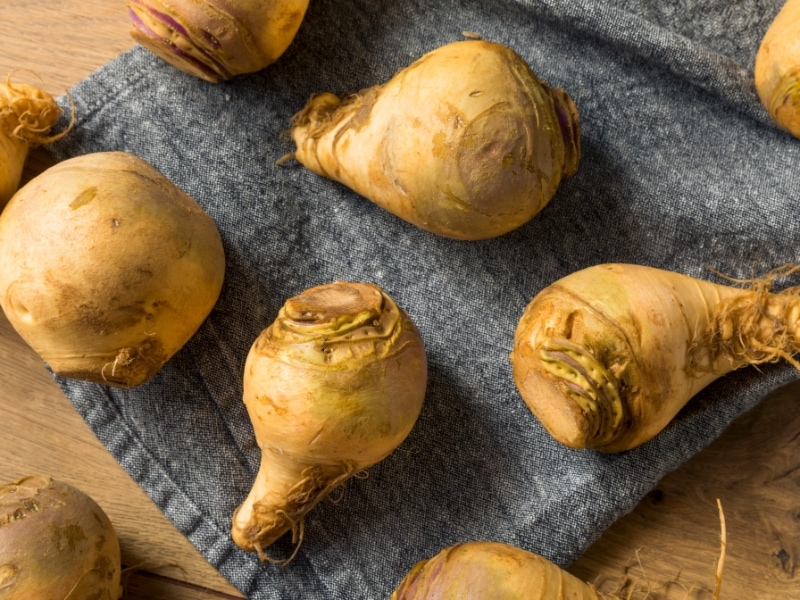
How to Pick a Rutabaga
The first step to picking a good rutabaga is to look for them while they’re in season.
Typically in the U.S., that means anytime between early October and mid-March.
Even so, you’ll find the best ones in the winter months.
Here are a few things to look for when selecting the perfect rutabaga:
- Size. Any smaller, and they were likely picked too early and will be hard and bitter. However, try to avoid purchasing/picking rutabagas that are larger than 5 inches. They may be too tough to enjoy.
- Scratchability. You should be able to scratch a ripe rutabaga with a fingernail without using too much pressure. After scratching it, you should notice yellow inner flesh.
- Color. Ripe rutabagas should have some purple to them. If they are entirely yellowish-brown, they may not be a good option.
- Firmness. Look for a rutabaga that’s firm to the touch. If its skin is wrinkled, shriveled, or soft, it has probably gone bad. Loose, saggy outer skin is another indicator of rot.
Finally, check your rutabaga for green sprouts. If it is already sprouting, it’s likely no longer good to eat.
How to Cook Rutabaga
Although you can eat raw rutabaga, most people don’t.
You might want to try it, though! It’s a tasty, crunchy, low-calorie snack!
Still, cooked rutabaga is far preferable to most people.
Fortunately, cooking this root veggie isn’t difficult.
Start by peeling it, as many store-bought ones are coated in paraffin wax.
You can do this with a vegetable peeler after* cutting the veggie in half.
Once you’ve peeled it, dice it up to make fries or cut and mash it for mashed “potatoes.”
You can also fry them like you would fry potatoes or toss them in the air fryer.
Basically, anything you can do with potatoes or turnips, you can also do with rutabaga.
*Note: Rutabagas can be challenging to peel when whole. Slice them in half first. That gives you better access to the skin and makes them easier to peel.
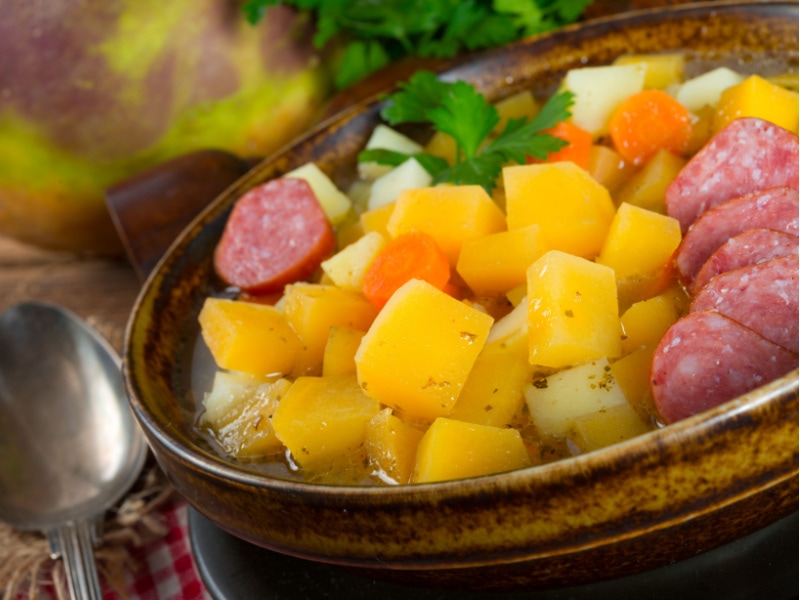
Rutabaga Recipes
Have I sold you on rutabaga yet? Are you ready to try it but don’t know where to start?
No problem! The following is a list of five of my favorite rutabaga recipes:
- Brown Sugar Roasted Rutabaga. These diced and roasted rutabagas are sweet and savory, with crisp skins and tender insides.
- Rutabaga Pie. Rutabaga pie is a beef pot pie dialed up to 11 and stuffed with flavorful veggies.
- Easy Mashed Rutabaga. Creamy and mild just like mashed potatoes, only made with rutabaga instead!
- Rutabaga Fries. These are some of the tastiest, most well-seasoned fries you’ll ever try. Even the kids will love them!
- Rutabaga Spice Cake. Sweet, spiced, and nutty, with a sugary, indulgent iced topping. What’s not to love?!
As you can see, you can do a lot with a simple rutabaga, including making a dessert!
A quick Google search will show you hundreds more great rutabaga recipes to try! So what are you waiting for?
Start cooking with this yummy root veggie as soon as possible.


